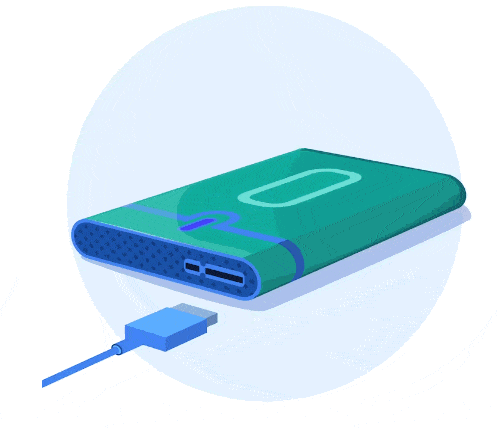How to Recover Data from a Physically Damaged Hard Drive
If your hard drive has been physically damaged, don’t panic! There are still ways to recover your data. This article will walk you through the steps on how to recover data from a physically damaged hard drive, including how to choose a data recovery service and what to expect during the process.
Hard drives are delicate devices, and even minor physical damage can cause them to fail. This can be a devastating experience, especially if you have important data stored on the drive. However, there is hope. In many cases, it is possible to recover data from a physically damaged hard drive.
Causes of physical hard drive damage
Physical hard drive damage can be caused by a variety of factors, including:
- Dropping or bumping the hard drive
- Water damage
- Fire damage
- Smoke damage
- Power surges
- Mechanical failure
Symptoms of a physically damaged hard drive
Some common symptoms of a physically damaged hard drive include:
- The hard drive does not spin up
- The hard drive makes unusual noises
- The hard drive is not recognized by the computer
- The computer freezes or crashes when trying to access the hard drive
- The hard drive is corrupted and files are missing or inaccessible
What to do if you have a physically damaged hard drive
If you have a physically damaged hard drive, the most important thing to do is to avoid using it. Any further use of the drive could damage the data even further and make it more difficult to recover.
If the hard drive is still under warranty, you may be able to return it to the manufacturer for repair or replacement. However, if the drive is not under warranty or if the damage is not covered by the warranty, you will need to take it to a professional data recovery service.
How a professional data recovery service recovers data from a physically damaged hard drive
Professional hard drive data recovery services have the specialized tools and expertise to recover data from even the most severely damaged hard drives. The specific steps involved in the data recovery process will vary depending on the nature of the damage, but the general process is as follows:
Data recovery process
- The drive is carefully examined to assess the damage and determine the best course of action.
- If necessary, the drive is opened in a clean room environment to minimize the risk of further damage.
- The damaged components of the drive are repaired or replaced.
- The data is recovered using specialized software and hardware.
- The data is copied to a new, working hard drive.
Clean Room Requirement for Physical Head Swap on a Physically Damaged Drive
Clean room requirements for physical head swap on a physically damaged drive are essential to prevent further damage to the drive and its data. A clean room is a controlled environment with ultra-low levels of dust, contaminants, and humidity. This is necessary because even a small amount of dust or other particles can cause the drive’s heads to crash into the platters, destroying the data.
Why is a clean room necessary for physical head swap?
A clean room is necessary for physical head swap because it helps to protect the drive and its data from the following:
- Dust and other airborne contaminants
- Humidity
- Static electricity
- Electromagnetic interference (EMI)
All of these factors can damage the drive’s delicate internal components, making it impossible to recover the data.
What are the specific clean room requirements for physical head swap?
The specific clean room requirements for physical head swap vary depending on the type of drive and the severity of the damage. However, there are some general requirements that all clean rooms must meet, including:
- The air must be filtered to remove dust and other contaminants.
- The humidity level must be controlled to prevent condensation.
- Static electricity must be controlled to prevent damage to the drive’s electronic components.
- EMI must be controlled to prevent interference with the drive’s operation.
Who should perform physical head swap in a clean room?
Physical head swap is a delicate procedure that should only be performed by a qualified data recovery technician in a clean room environment. Data recovery technicians have the training and experience necessary to safely and effectively swap heads without damaging the drive or its data.
If you have a physically damaged drive that requires a head swap, it is important to take it to a reputable data recovery company that has a clean room and experienced technicians.
Cost of data recovery services
The cost of data recovery services will vary depending on the severity of the damage, cost of donors and the amount of data that needs to be recovered. However, it is generally worth the investment to recover important data, such as family photos, business documents, or financial records.
How to prevent hard drive damage
The best way to prevent disk damage is to back up your data regularly. This way, if your hard drive does fail, you will have a copy of your data that you can restore.
You can also take steps to reduce the risk of physical disk damage by:
- Handling your hard drive carefully
- Protecting your computer from power surges and other electrical disturbances
- Keeping your computer clean and well-ventilated
If you experience any of the symptoms of disk damage, it is important to stop using the hard drive immediately and take it to a professional data recovery service.
Conclusion
If you have a physically damaged hard drive, do not despair. It is possible to recover data from most damaged drives, even if the drive is not under warranty. Simply take the drive to a professional data recovery service as soon as possible to avoid further damage and maximize your chances of successful recovery.
Dead Hard Drive Recovery FAQs
How do i know whether a hard drive has a logical or physical damage?
Logical damage is damage to the file system or data on the hard drive, but the physical hardware is still intact. This can be caused by software problems, such as a virus infection or a power outage while the drive is in use.
Physical damage is damage to the hard drive’s hardware, such as the platters, heads, or motor. This can be caused by dropping the drive, spilling water on it, or simply wear and tear over time.
Here are some ways to tell if your hard drive has logical or physical damage:
- Logical damage:
- The computer cannot boot from the hard drive.
- Files are missing or corrupted.
- The hard drive is slow to perform operations such as opening files or copying data.
- The computer freezes or crashes frequently.
- Physical damage:
- The hard drive makes strange noises, such as clicking, grinding, or beeping.
- The hard drive is not recognized by the computer.
- The hard drive is overheating.
If you suspect that your hard drive has physical damage, it is important to stop using it immediately to avoid further damage to the data. You should also contact a professional data recovery company to see if they can recover your data.
What do i do when my hard drive has a clicking sound?
If your hard drive is making a clicking sound, it is a sign of physical damage. The most likely cause is a failure of the read/write heads. The read/write heads are responsible for reading and writing data to the platters. When the heads fail, they can start to scratch the platters, which can damage the data.
If you hear a clicking sound from your hard drive, it is important to stop using it immediately to avoid further damage to the data. You should also contact a professional data recovery company to see if they can recover your data.
What to do when my hard drive falls in water?
If your hard drive falls in water, the first thing you should do is to turn off the power to your computer and disconnect the hard drive. If the hard drive is still wet, dry it off with a clean towel. Do not try to power on the hard drive until it is completely dry.
Once the hard drive is dry, you should contact a hard drive repair company to see if they can recover your data. Data recovery is possible from water-damaged hard drives, but it is important to act quickly to minimize the risk of data loss.
Can a failed hard drive be repaired for reuse?
It is possible to repair a failed hard drive for reuse, but it is not always recommended. If the hard drive has physical damage, such as a scratched platter or a failed head, it is unlikely that it can be repaired successfully. Even if the hard drive can be repaired, there is a risk that it will fail again prematurely.
If your hard drive has failed, it is generally best to replace it with a new one. However, if you have important data on the failed hard drive, you may want to consider contacting a data recovery company to see if they can recover your data.
Is data recovery guaranteed?
Data recovery is not guaranteed, but professional data recovery companies have a high success rate. The success rate of data recovery depends on a number of factors, such as the type of damage to the hard drive and the severity of the damage.
If you are considering data recovery, it is important to choose a reputable company with a good track record. You should also get a written estimate of the cost of data recovery before you proceed.
Here are some additional tips for data recovery:
- Back up your data regularly. This is the best way to protect your data from loss in the event of a hard drive failure or other disaster.
- If your hard drive fails, stop using it immediately. This will help to minimize the risk of further damage to the data.
- Contact a professional data recovery company as soon as possible. The sooner you contact a data recovery company, the better the chances of recovering your data.
Here’s some more useful resources on How to Recover Data from a Physically Damaged Hard Drive
https://www.linkedin.com/pulse/how-recover-data-from-physically-damaged/
https://www.reddit.com/user/DazzTech/comments/16v7l7c/how_to_recover_data_from_a_physically_damaged/









